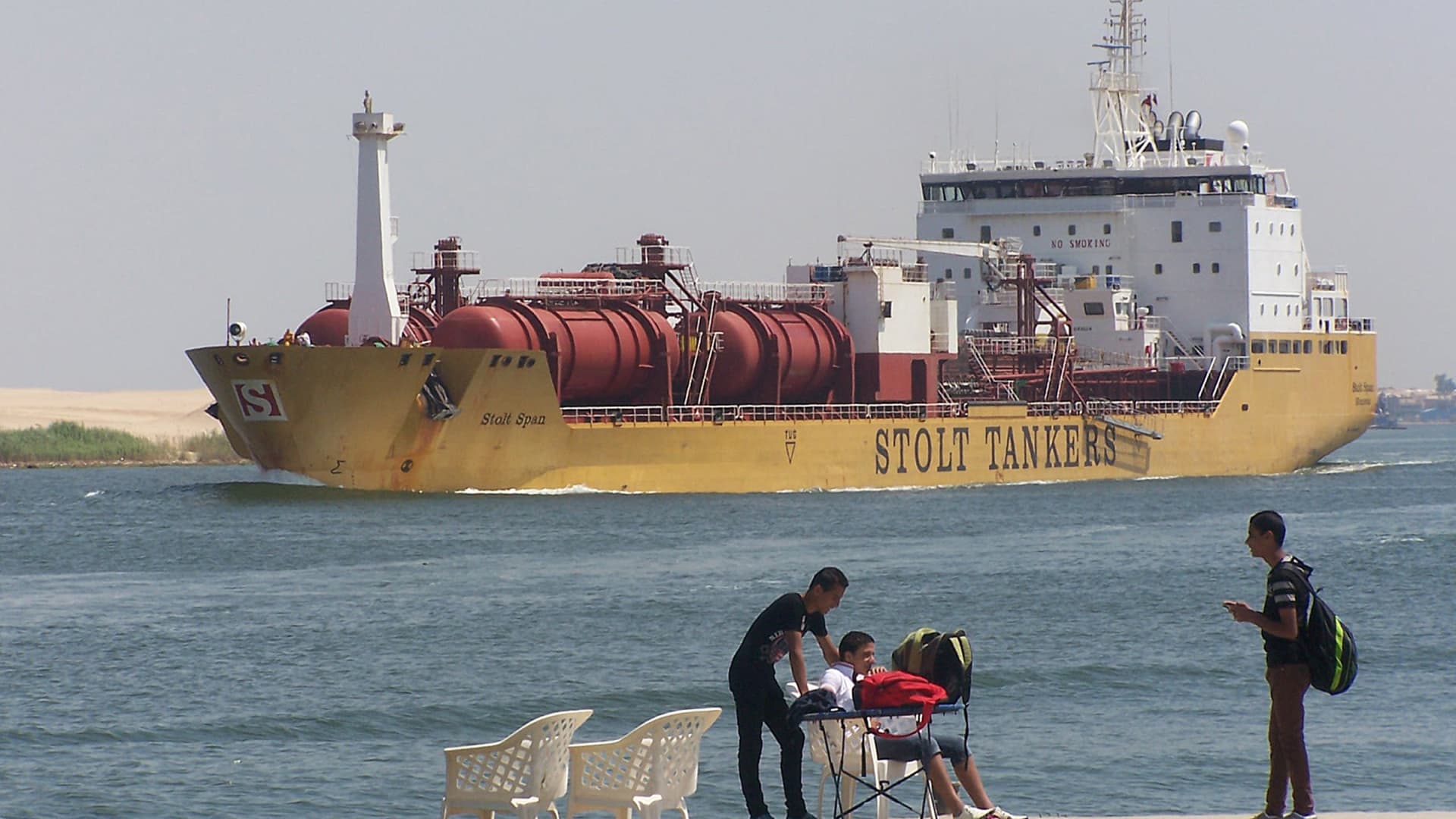Oil prices could spike 20%, possibly double if Middle East conflict disrupts Strait of Hormuz


Oil traders have largely shrugged off repeated attacks on vessels in the Red Sea, but a confrontation with Iran that disrupts the Strait of Hormuz would send crude prices significantly higher, according to analysts. “If you’ve got a disruption of the Strait of Hormuz for a month, prices would rise by 20%,” Daan Struyven, Goldman Sachs’ head of oil research, told CNBC’s Brian Sullivan on Thursday evening. Shipping can be rerouted away from the Red Sea, but crude would be essentially trapped if the strait is shut down, Struyven said. A prolonged disruption in the strait could eventually double oil prices, he said. While Goldman Sachs views this scenario as unlikely, Bob McNally with Rapidan Energy Group sees a 30% risk that the conflict in the Middle East will expand to Iran and cause a material disruption to oil flows in the Persian Gulf. Tensions in the region are escalating and the market has not adequately priced in the risk of contagion, said McNally, who served on the National Security Council in 2003 during the Bush administration. Secretary of State Antony Blinken is heading to the Middle East for a week of diplomacy in effort to prevent the Israel-Hamas war from spiraling into broader conflict. Geopolitical risk premium Daniel Yergin, vice chair of S & P Global, said geopolitical risk is now creeping back into the market. The price of U.S. crude rose by $2.16 over the past week and global benchmark Brent gained $1.72. “We’re starting seeing an impact on oil prices, geopolitical risks coming into a market which has really been dominated by supply and demand,” Yergin said on CNBC’s ” The Exchange ” on Friday. McNally thinks the market should be factoring in a $12 geopolitical risk premium in oil prices right now. He said the market has not factored in the risk because traders have “very thick skin” after witnessing repeated conflicts in the region that ultimately did not disrupt supplies for a prolonged period. But the risks are growing and Iran has not shied away from tacking action in the Strait of Hormuz in the past. Chevron CEO Michael Wirth pointed to attacks by Tehran’s navy last summer against the oil major’s ships in the strait. Wirth told CNBC’s Sullivan that Chevron is currently working with the U.S. Navy to protect its vessels transiting the Red Sea. But Houthi militants, who are based in Yemen and allied with Iran, have defied a stern U.S. ultimatum to halt attacks on Red Sea shipping or face the consequences. The Danish shipping giant Maersk said Friday that it will divert all of its ships away from the Red Sea for the “foreseeable future” as the “security risk continues to be at a significantly elevated level.” President Joe Biden’s national security team met on Wednesday to review options that include strikes against Houthi targets in Yemen, two administration officials told NBC News . Energy Secretary Jennifer Granholm on Friday acknowledged that Red Sea disruptions could “add some price to energy in terms of how long it takes and how much more fuel it takes to get those shipments around.” Goldman Sachs thinks a prolonged disruption in just the Red Sea could add up to $4 to the price of crude, Struyven said. Granholm gave tepid reassurance about the situation in the waterway, pointing to the U.S.-led maritime coalition to protect commercial vessels. But she tempered that message with the prospect of large scale shipping diversions. “Hopefully, if it doesn’t escalate further, we’ll be OK — even if there has to be a wholesale diversion of shipments around the Red Sea,” Granholm said. Yergin noted that about 40% of oil flowing from the Strait of Hormuz passed through the Red Sea before Hamas attacked Israel on Oct. 7, which triggered the current round of tensions. The amount of crude transiting that route has dropped by about half since the attack, he said. Pay attention to Lebanon While attention is focused on the Red Sea at the moment, McNally said traders need to keep a closer eye on the escalating situation in Lebanon. Hezbollah rocket fire has forced Israel to evacuate civilians from its northern border. Benny Gantz, a member of Israel’s war cabinet, warned Beirut last week that the time for a diplomatic solution is running out. Gantz said Israel would intervene if the Lebanese government does not convince Hezbollah to withdraw from the border area. Though Lebanon is not an oil producer, Hezbollah functions as Iran’s strategic right arm and the Islamic Republic cannot allow such a key asset to get pummeled, according to McNally. The Islamic Republic’s main piece of leverage over the U.S. and its allies is the flow of oil through the Strait of Hormuz. McNally said Iran can use the flow of oil in the strait to threaten Biden’s “election, economy and infuriate motorists around world.” U.S. oil production providing relief As tensions rise in the Middle East, record oil production in the U.S. is the major factor that has kept prices from jumping substantially higher, said Bob Yawger, energy futures strategist at Mizuho. The U.S. pumped an estimated 13.2 million barrels of oil per day for the week ending Dec. 29, just slightly below the previous record of 13.3 million, according to the Energy Information Agency. Gasoline and distillate inventories in the U.S. both soared more than 10 million barrels during the same period. Yawger said refiners in Europe will increasingly import oil directly from the U.S. and avoid geopolitical risk altogether rather rely on ships rerouted from the volatile Red Sea around the Cape of Good Hope in South Africa. “You can just sail a vessel to the beautiful Gulf Coast of the United States and do business in nice clean fashion,” he said. This shift showed up in U.S. export data, with crude shipments rising more 1 million barrels per day to 5.2 million barrels per day total last week, Yawger said. U.S. crude is cheaper than Brent and also provides a higher gasoline yield, he said. Ultimately, the confluence of conflict in the Middle East and U.S. production could further undermine OPEC’s market share, pushing customers away from the region. “The position of the United States, by far the world’s largest oil producer, it has been not only a rebalancing of supply and demand — it’s been a rebalancing geopolitically,” Yergin said. This post has been syndicated from a third-party source. View the original article here.




